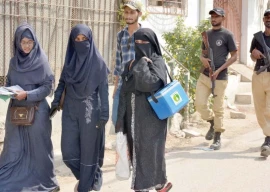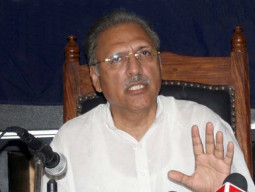
The Institute of Architects Pakistan (IAP) is preparing a manual that will list basic guidelines on conserving energy when its members design buildings and houses.
Proponents hope that the first of its kind manual for local architects will encourage the use of natural light and air to cut electricity consumption, said architect Husnain Lotia on the sidelines of the annual seminar held at the Expo Centre over the weekend.
“Architects everywhere else work with some framework,” he said. “So we are also trying to have something in the shape of a document to give advice to architects.”
The realisation is slowly setting in that we need to have green buildings instead of concrete masses, he said. “It is true that sponsors want to keep costs at a minimum and accommodate the maximum number of people in a building. But I think times have changed.”
Sharing his own experience, he said: “I am working with the government on some of its projects and when I tell a board meeting that the design should be changed to make it environment friendly, they actually listen.”
In the past two decades, thousands of buildings have sprung up in Karachi but they pay little attention to air ventilation and passage for sunlight. As land becomes expensive, builders have tried to build upwards and squeeze more and more people in them, architects say.
A separate set of guidelines for energy conservation that were prepared by the National Energy Conservation Centre have been difficult to implement. Architects say municipal authorities must ensure that set guidelines are followed.
The rapid growth of population in urban areas has made it imperative for architects to pay attention to designs as the country struggles to meet growing a energy demand with limited resources.
Ronald deSouza of Shehri said Pakistan was consuming much more than it produces. “Still there is emphasis on grand living styles.”
People yearn to make Karachi something like Dubai, which is among the states where the most natural resources are wasted in relation to availability, he said. “Architects must try to use local material while constructing. That will save cost and the eco-footprint,” he said, referring to how building material is imported on cargo vessels, which burn a lot of fuel.
He said that there was a lot of talk about climate change but a lot of people didn’t believe in it. “But the fact is that we were 2.5 billion people in 1951 and now the number is 7 billion.”
Commercialisation, which has come along with rapid development in the city poses additional challenges for architects trying to conserve heritage buildings, the conference was told.
Mariyam Nizam, the heritage manager at the Heritage Foundation, said historical buildings in Karachi were under constant threat. “Buildings in Boulton Market were damaged in rioting and Empress Market was burnt after electricity short circuiting.”
The foundation is trying to revitalise the historical Marriott Street in Saddar but billboards, crisscrossing power and telephone cables and encroachments have made the job difficult, she said.
She is also part of work outside the city, where architects are using vernacular architecture to build low-cost houses using bamboo and mud. “We have built houses and community centres in rural Sindh and Swat.” Showing pictures, she said the experiment has been successful as properly built huts can withstand harsh weather. “We will be building 10,000 such structures across Sindh in the coming months.”
Published in The Express Tribune, April 15th, 2012.

1722586547-0/Untitled-design-(73)1722586547-0-165x106.webp)


1732326457-0/prime-(1)1732326457-0-165x106.webp)












COMMENTS
Comments are moderated and generally will be posted if they are on-topic and not abusive.
For more information, please see our Comments FAQ